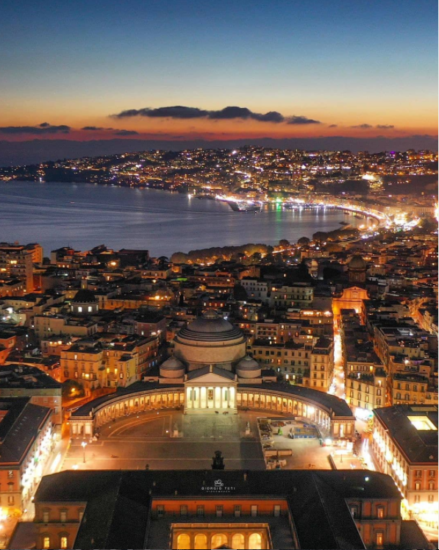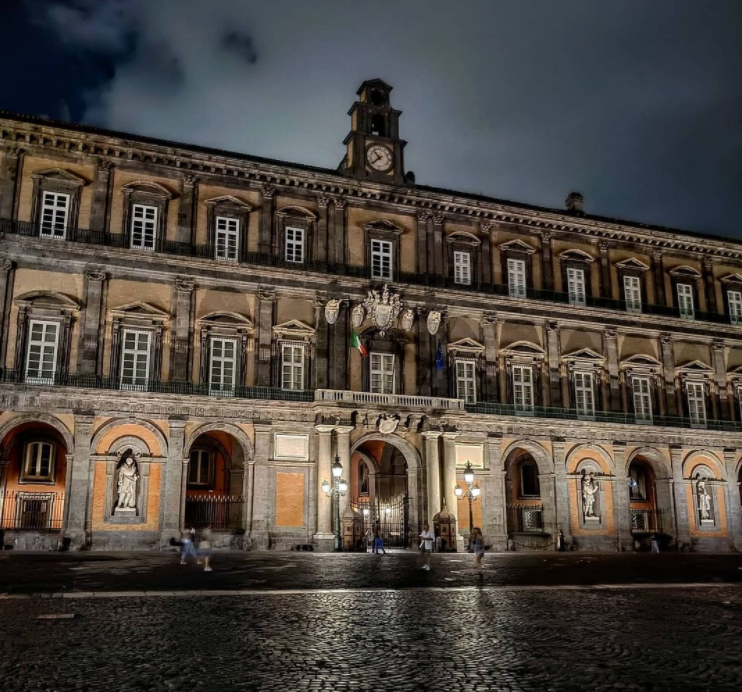Piazza del Plebiscito
Piazza del Plebiscito is one of the iconic places of Naples. Located in the heart of the historic center, at the end of via Toledo, with a surface of over 25 thousand square meters it is the largest in the city and one of the largest in all of Italy. Bordered on the sides by the famous colonnade, it is laterally closed by the Palazzo della Prefettura and Palazzo Salerno, the Royal Palace, and the Church of San Francesco di Paola.
It is customary to divide Piazza del Plebiscito into two parts: the first at the foot of the basilica of San Francesco di Paola follows a semicircular shape, while the other, which borders at the end with the Royal Palace and is determined on the short sides by the curtains of the twin palaces has a more rectangular shape.



In the centers of the two areas, there are, isolated, the two equestrian statues of Charles III of Bourbon and his son Ferdinando I, made by Canova and his pupil Antonio Calì. Famous is the game of crossing the square blindfolded or with eyes closed in a straight line, starting from the door of the Royal Palace, which is located right in the center between the two equestrian statues, but practically no one succeeds in the enterprise.
The square is around since the completion of the Royal Palace, but was not paved and was known as Largo di Palazzo. At some point, there were even bullfights held here. At the beginning of the 19th century, the piazza was paved and enlarged by Joachim-Napoléon Murat, who had ascended the throne of Naples, to honor his brother-in-law, Napoleon Bonaparte.



The name of the piazza is a reference to the plebiscite of October 1860 when still under the umbrella of the Kingdom of Two Sicilies, Naples decided to consent to the annexation into the union of Italy. Since this large pedestrianized area is usually crowded to get the best pictures, go either in the morning or late in the afternoon.




